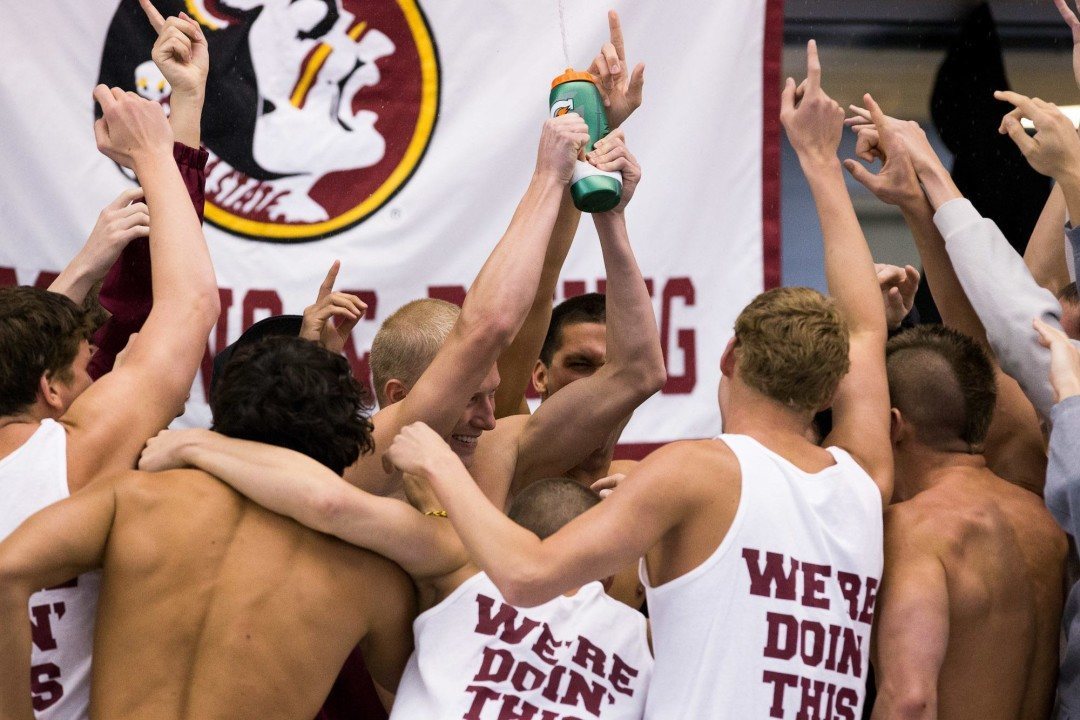Coaches know how important it is to build community within groups and among the whole team as the season begins in September. Though the bulk of your group or team may remain the same, there are always new swimmers moving into the team and into different groups. To avoid the formation of cliques and promote trust and communication, it is vital that coaches spend time deliberately fostering a sense of community. Done well, community building helps facilitate good communication between swimmers and coaches and creates a sense of trust and respect that promotes the full engagement of all swimmers everyday. When swimmers feel like they belong within the community, they are more likely to be fully committed to the program and try their hardest.
It’s a good idea to spend time at the beginning of the season doing some team building activities. Building trust, clear communication, respect, and community from the beginning will create a positive experience throughout the year, but it is also important to remember to reinforce the ideas of community and belonging throughout the season. Right now, as some high school seasons are beginning and club teams are headed into focus meets, it is a great time to remind swimmers that they are in a safe community with people they can trust and rely on through fun and engaging activities.
Here are some team and community building activities can often be built into practices and can take as much time as desired:
FAST FACTS: Have kids write a fun fact about themselves that they think no one in the group knows about them on an index card. Read them out loud and have the group guess who they think the fact applies to. This short game can be played straight through (read all of the cards in one sitting) or have kids create the cards at the beginning of the season and play sporadically (read 2-3 at a time, during a break or before or after practice). Swimmers will get to know their teammates better and begin to build a community.
ABC’s: The group has to recite the ABC’s out loud. The catch is, if two or more people say the same letter, the group has to start back at A. Only one person in the group can say each letter. I often add the catch that each swimmer can only add 3 letters to the alphabet, so that all swimmers have the opportunity to participate. This takes a while to finally get to Z! It’s a fun game to play during a few spare minutes that helps build communication skills and instills a sense of accomplishment shared by the group when they finally reach “Z”!
THE SHOE GAME: Swimmers form a circle in an open space where they can run around. Swimmers will take off their shoes and use them as a “place setting” for the game. One swimmer will remove their place from the outer circle and become the person in the middle. There should always be one more person than shoe “place setting” in the outer circle. The person in the middle will make a statement and everyone for whom that statement applies will move to a new shoe setting. The person in the middle will also run to a shoe setting and a new swimmer is in the middle. Repeat making a statement and running. Statements can be any fun fact about the person in the middle: “My favorite stroke is butterfly,” “I have a dog,” or “I want to swim in college.” Swimmers will find things in common that they have with the rest of the swimmers on their team or in their group.
SUPERSTAR AWARDS: These awards are swimmer generated. Swimmers acknowledge someone in the group who did a great job at the end of practice. These awards don’t need to be who swam the fastest, but rather acknowledge those swimmers who had a positive attitude through a challenging set, those who encourage others, or those who put in a really strong effort at practice. Swimmers can create a short cheer (“You’re a superstar!”, wave spirit fingers, Give ‘em 1 (one loud clap from the group simultaneously), etc). The point of these awards is for swimmers to acknowledge each other’s accomplishments and build each other up by noticing when other swimmers do well. The longer these awards are done, the more a group takes ownership of these awards and they become a serious source of pride!
